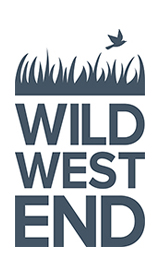Biodiversity Net Gain: The New Norm
Biodiversity is at crisis point. According to an analysis from conservation charity the RSPB, the UK has failed to reach 17 out of 20 UN biodiversity targets agreed on 10 years ago, resulting in a “lost decade for nature”. We have only half of our natural biodiversity left. When compared across all countries in the European Union, only Ireland and Malta come out worse , and the UK is in the bottom 10% of all countries globally in terms of how much of our historic biodiversity still survives.
In response to this crisis, BNG has emerged as an outcome-focused policy that aims to leave the natural environment in a measurably better state than beforehand in order to meaningfully contribute to the reversal of biodiversity declines and the restoration and recovery of local and national biodiversity networks.
What does BNG mean for you?
Under the (pending) UK Environment Bill, new developments will soon be mandated to deliver more for biodiversity. In order to meet the aspirations and targets of the policy, the following is required:
Stronger consideration of avoiding potential impacts to existing green space and vegetation
Inclusion of enhancement measures for retained green spaces, given the likelihood that these won’t be in optimal biodiverse condition
Designing in higher value new green space provisions that are bigger, better and well-connected (to each other and to adjacent green spaces)
Committing to all of the above even where your development site has little pre-existing biodiversity to speak of, such that new sites are meaningfully and measurably biodiversity positive (a few plant pots simply won’t do!).
Approaches to deliver BNG:
Consider biodiversity early in the project lifecycle, rather than at the end once designs are largely fixed
Engage a specialist - don’t try to tackle the complexities of the issue alone - input that is well-timed, and light-touch, can be extremely valuable in terms of optimising green infrastructure opportunities and minimising costs
Use existing information, plans and strategies, don’t reinvent the wheel (CIEEM principles and guidance[1], GLA’s Urban Greening Factor[2] (to be adopted in the new London Plan (pending)), London Biodiversity Strategy[3]
Speak to stakeholders including the local community - they may hold extremely useful knowledge and advice and unlock the door to longer-term support and stewardship for the project
Have you considered the following interventions to enhance biodiversity?
Diversify existing or proposed planting mixes to create species-rich habitats, as opposed to those containing only a few species
Consider structure and the provision of a mixture of ground flora, lower planting, taller shrubs and trees, and try to create natural planting patterns
Add in features to support species lifecycles and ecological requirements, such as places of shelter and water
Review maintenance and management practices that may limit biodiversity potential
Trial a fringe of unmown grassland to a park or a square; across larger areas, this may even constitute a cost-saving
A step change is needed in how development approaches its relationship with the natural environment. Designing places through a biodiversity lens will contribute to creating healthy, engaging and resilient places that are of as much value to people as they are to our declining habitats and species. With such evident benefits, alongside our increasing reliance on access to high-quality urban green space, how could you not aim for gain?
.



